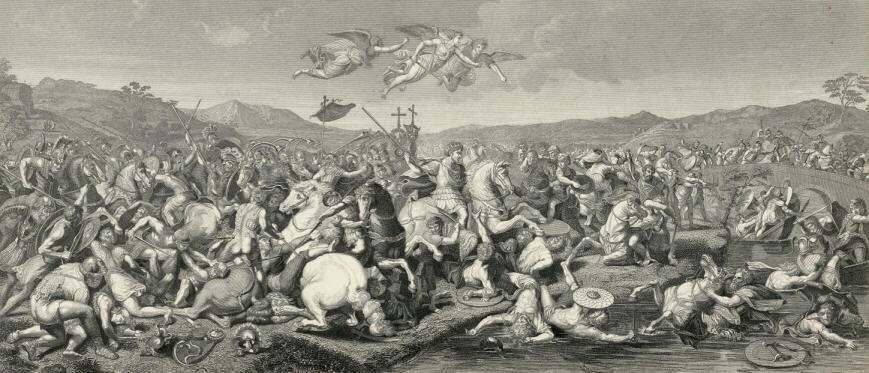
Very good Book. Quotes of interest
Indeed it is not against enemies in flesh and blood that we have to fight, but against the lords, the powers, the rulers of the world of darkness, against the evil spirits which inhabit the heavens.
On a rule for the oder it was necessary to have a "rule" not only suitable to the dignity of a religious order but compatible with the necessity of waging war. Being as hard as warriors byt meek as a monk.
Gerald du Aurillac used his social station in a Christian way, that is, by using his power, even military power, no to plunder and pillage but to defend the defenseless people of Christ.
For the Augustinians, religion meant first and foremost service to others, especially the downtrodden; it was understood in the context of a daily battle against evil in the world using the arms of the faith. St. Augustine had praised the actions of those who dedicated their lives to the defense of the oppressed as a just war. Waged in the name of the supreme good of peace. It must be noted that the Holy bible contained many examples of men sanctified for the defense of their faith; among them King David. The figure of the religious warrior, abundantly exhaulted in the Old Testament, was sucessfully repurposed by the militant spirituality of the Augustinians as a way of ensuring salvation for the poor and underpivilaged.
Defenders of the defenseless, taking upon themselves a just mission, serving God with their arms to obtain remission of their sins.
The Templars wished to atone for their sins by risking their lives to defend the Holy Land. If they died, their souls would be those of men who fell in service to the Church and the Faith. Killing Saracens meant murdering murderers, eliminating those who had made themselves instruments of evil: this was not homicide but malicide, the killing of evil.
As St. Michael the Archangel, leader of the celestial forces against the powers of darkness, defeats the devil in the great battle of the last day, so does the knight serve the Faith by defeating its enemies. and isn't the Virgin Mary herself the one who crushes under her foot the head of the serpent, the incarnation of evil?
An order would not survive if it lost sight of its original values of penitence and spiritual poverty. The innate arrogance of Knighthood would need to be tempered by the inflexible practice of personal humility.
They would have to subject themselves to a regime of absolute obedience, renouncing their freewill to submit themselves completely to the will of their superiors. This would create a strongly homogenous and cohesive body. Commanders must maintain strict discipline. The Order could become a model of perfection in Christian society, but its leaders had to assume and exercise great moral responsibility towards the Church.
In the Warrior-Brothers of the Temple the meekness and humility of the true monk were united with the courage and noble intent of the virtuous knight. The Templar knights represented the perfect acheivement of that ideal combination of physical force and inner strength.
Templars were not ordained and never became priests. They took vows of poverty, obedience, and chastity. A special cannonical interdiction prohibited priests from engaging in combat or spilling blood. The Order was given chaplains who were priests ordained prior to joining the brotherhood, and it was absolutely prohibited to deploy them on combat missions.
Candidates already have received in their secular lives the necessary instruction in certain values that would prove very useful to the new order.
The Templars recognized four cardinal points of military ethic in their model: physical strength, courage with honor, loyalty to the group, and the spirit of sacrifice. These four knightly virtues were associated with coresponding Christian values and formed the conceptual framework that would make the Templars into ideal knights. Elevated further by their Catholicity. (Parallel with 7 Army values: Loyalty, Duty, Respect, Selfless Service, Honor, Integrity, Personal Courage)
Pride was the biggest stumbling block. Templars had to maintain the utmost humility as an individual while feeding intense pride in belonging to the Temple.
The rule expressely required them to be a visible example of holiness and moderation. So Templars had to observe all the precepts to which they were bound and endevour to make an excellent impression on everyone they met.
The religious orthodoxy of the Templars, in view of their mission as warriors, had pushed short of the Christian fanaticism was widley recognized. They were regarded as occupying the summit of Christioan model of Society. Because they were nobles, as well as monks, the knights of the Temple united in themselves two clases to which God had entrusted the difficult task of guiding humanity.
